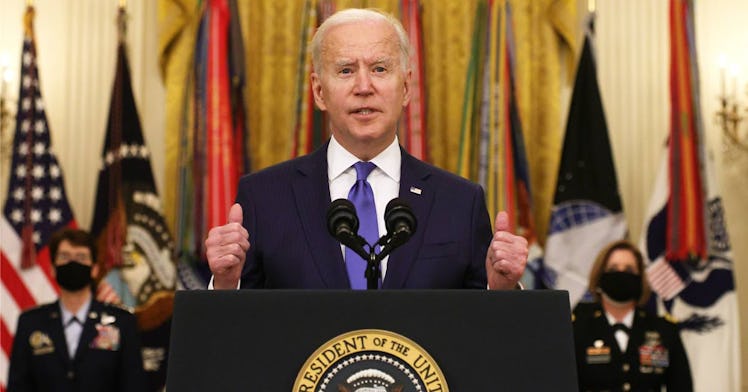What to Know About Biden’s New Gender Policy Council
In two executive orders, Biden made major moves on gender equality and gender equality in education. Here's what matters.

President Joe Biden announced on Monday, March 8th, also known as International Women’s Day, that he’d be creating a Gender Policy Council within the White House that would focus on policies to advance the rights of women and girls across the country of every race, gender, and sexuality. He also signed another executive order, The Policy to Guarantee Education Free From Sexual Violence, that would address sexual assault and violence in education.
The council creation is a massive signal that federal policy could come to help girls across the country. The Trump administration had dismantled a similar Obama-era council and also rolled back Title IX, another Obama administration guidance that litigated gender equity and sexual violence on campuses across the country. There are also nearly 50 anti-trans kid bills in state-houses across the country. A focus on the rights of women and girls (cis and transgender alike) is much needed.
Additionally, the council comes on the heels of a pandemic-related economic recession that is often simply referred to as a “shecession,” due to the sheer number of job losses keenly felt by women across the country. In one month of the recession alone, women represented all of the jobs lost while men gained 16,000 jobs.
Here’s what you should know about both the council and the executive order.
What to Know About the Gender Policy Council
“The White House Gender Policy Council will be an essential part of the Biden-Harris administration’s plan to ensure we build a more equal and just democracy by aggressively protecting the rights and unique needs of those who experience multiple forms of discrimination, including people of color and lesbian, gay, bisexual, transgender and queer people,” said Julissa Reynoso, a co-chair of the Gender Policy Council and First Lady Jill Biden’s Chief of Staff, when announcing the plan.
The policy council, which is a reiteration of a former Obama admin council, will aim to tackle structural sexism in America — from bias to outright assault. They’ll investigate what stops women from full workforce participation (a particularly salient avenue of exploration amidst an economy in which millions and millions of more women have lost their jobs than men), how gaps in wages in wealth intersect with gender, and what American families need to thrive equitably.
The council will also look at health care and gender barriers in the international context and are required to work with non-profit, community-based, state, local, tribal, and foreign organizations and governments while they continue to build out and research equity policy. The goal of the council is to provide a strategy to increase equity in policymaking in all areas of government.
What to Know About The Policy to Guarantee Education Free From Sexual Violence
The second executive order President Joe Biden announced on March 8th signals that he would be directing the Education Department to review the moves former Secretary of Education Betsy Devos made to weaken Title IX, landmark legislation that protected the rights of victims of sexual assault on campus.
When Devos was in charge, she rewrote the law to bolster the rights of those who are accused of sexual assault and diminish the rights of those who experienced it. The move was deeply controversial and it is no surprise that Biden, who was VP when Title IX came into place, would work to dismantle the rollbacks.
While the revisions to the rule aren’t complete, Biden did ask for the review to consider whether or not the rule was “consistent” with Biden administration policies and values, and asks the DoE to look at other rules within the department to ensure they share the same goal of ensuring people access to education “free from sexual violence.”
So, while Title IX isn’t fixed, all signs are pointing to a new rule or a revision of Title IX happening again — perhaps this time with the rule of law behind it.
This article was originally published on